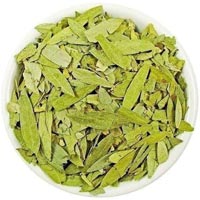Liu Yingdong
Namoer ‘Town Hospital, Wudalianchi Cir, Heilongjiang Province 164I23
The cupping therapy has remarkable antipyretic effect in the treatment of fever. In recent years, the author has treated 103 cases of high fever caused by infection of the upper respiratory tract and obtained quite satisfactory therapeutic results. A report follows.
Clinical Data
Among the 103 patients, there were 67 male and 36 female. The oldest patient was 58 years old and the youngest, 17 years old. 5 cases were between 17 to 30 years old, 77 cases between 21 to 40 years old, and 21 cases between 41 to 60 years old. 92 cases had a temperature of 39-39.9’C, and 11 cases had a temperature of over 39.9’C.
Therapeutic Method
Point selection: Dazhui (GV 14), Zhongfu (LU l) and Feishu (BL 13) on both sides. For patients with restlessness, drowsiness or delirium, Lingtai (GV 10) and Shendao (GV 11) are added.
The patient should try his or her best to be in a sitting position; but for the severe cases, a lateticumbent position was permitted. Sterilization with a 75% alcohol cotton ball was first carried out over the copping area, and the fire-insertion cupping was then performed over each point for 5 to 15 minutes. One cup could be used for both Lingtai and Shendao. If the patient was thinly built, a flour dough could be made to apply around the mouth of the bottle before the cupping treatment. For female patients, the suction should be moderate to avoid injuries of the fissues of the mammary gland.
All of the patients in this study received only one session of treatment. The body temperature was measured at about 45 minutes to 1 hour, 4 to 6 hours, and 14 to 20 hours after treatment so as to observe the therapeutic effect.
Cured: The temperature dropped to the normal range, and it was still normal after 14 hours.
Effective: The temperature dropped to the normal range, and it was no more than 38’C 14 hours later; or the temperature dropped to 37.4 to 38 ‘C and raised by no more than 0.4’C 14 hours later.
The results showed that 31 cases (30.10%) were cured, 68 cases (66.02%) were effective, with a total effective rate of 96.12%.
Typical Case
Mr. Yu, a 26-years-old worker, complained that he had received fluid infusion treatment of 5 days; when he came to visit our hospital, his sore throat and cough were somewhat improved, but the fever refused to drop. On the examination, he was found with a temperature of 39.2”C with a swollen tonsil (II). He was diagnosed as having acute tonsillitis. ABer treated by the above therapy, his temperature dropped to 38.5”C aAer one hour, to 37‘C aAer 6 hours, and to 36.8”C after 14 hours.
Comment
Dazhui is a crossing point where all the yong meridians meet, and it has the actions of dispelling the pathogenic factors in the yang meridians, relieving the exterior syndrome, and clearing away heat. Zhongfu has the functions strengthening the defensive energy of the lungs, and purging away the heat in chest. Feishu can regulate the lung-qi and remove the heat of deficiency type. When these points are taken in combination, they can not only strengthen the functions of the lungs, but also relieve the exterior syndrome and remove the pathogenic factors from the body. When the exterior pathogenic factors are removed and the defensive energy is sufficient, other disease will not be evolved. This is actually a method for treating both the superficiality and the origin. Compared to the drug therapy, cupping is simpler, more economical and effective, and it is especially applicable in the poor and remote areas.
(Translated by Ye Huan)
Source: Journal of Traditional Chinese Medicine 22 (2): 124-125, 2002 – http://www.cnki.net


